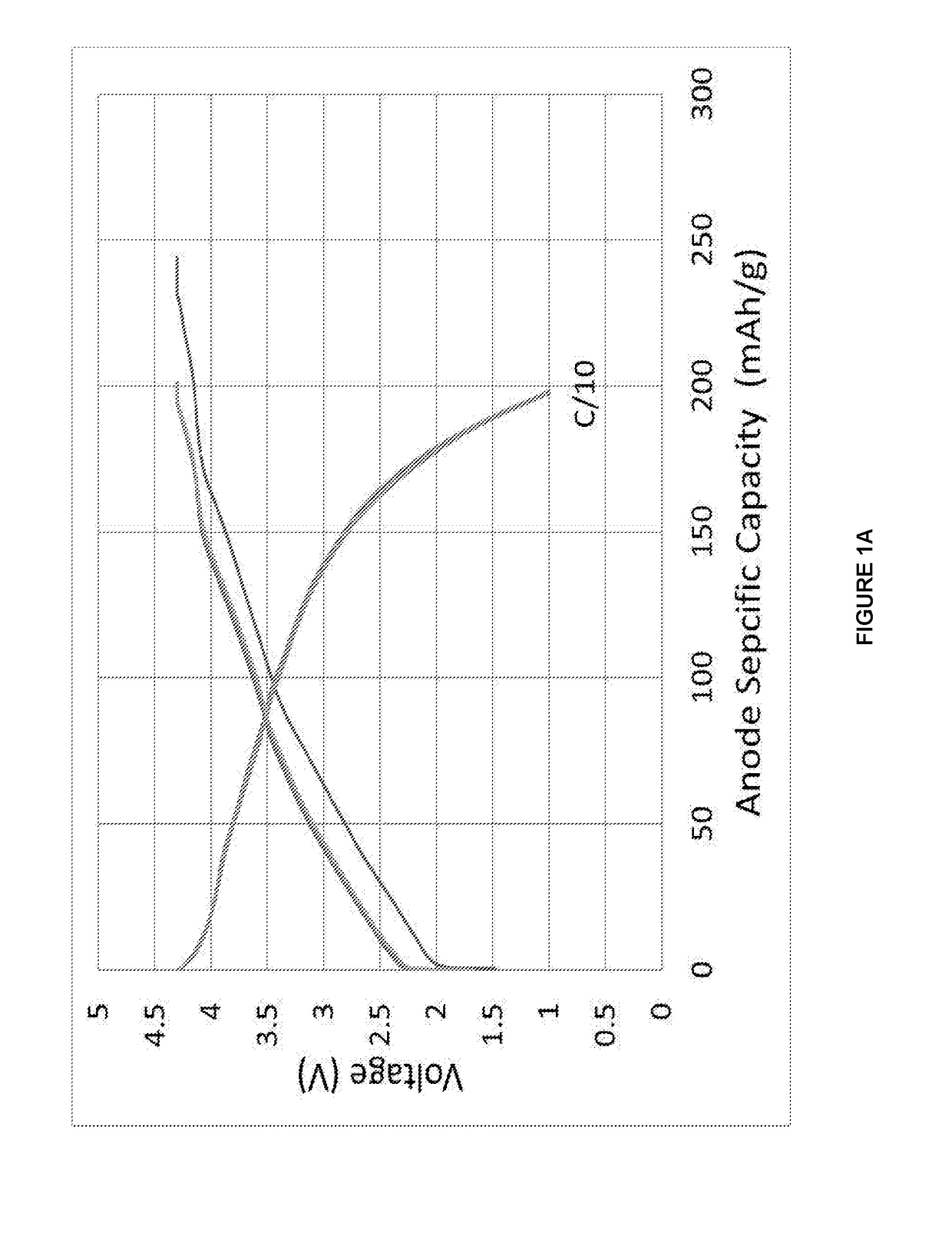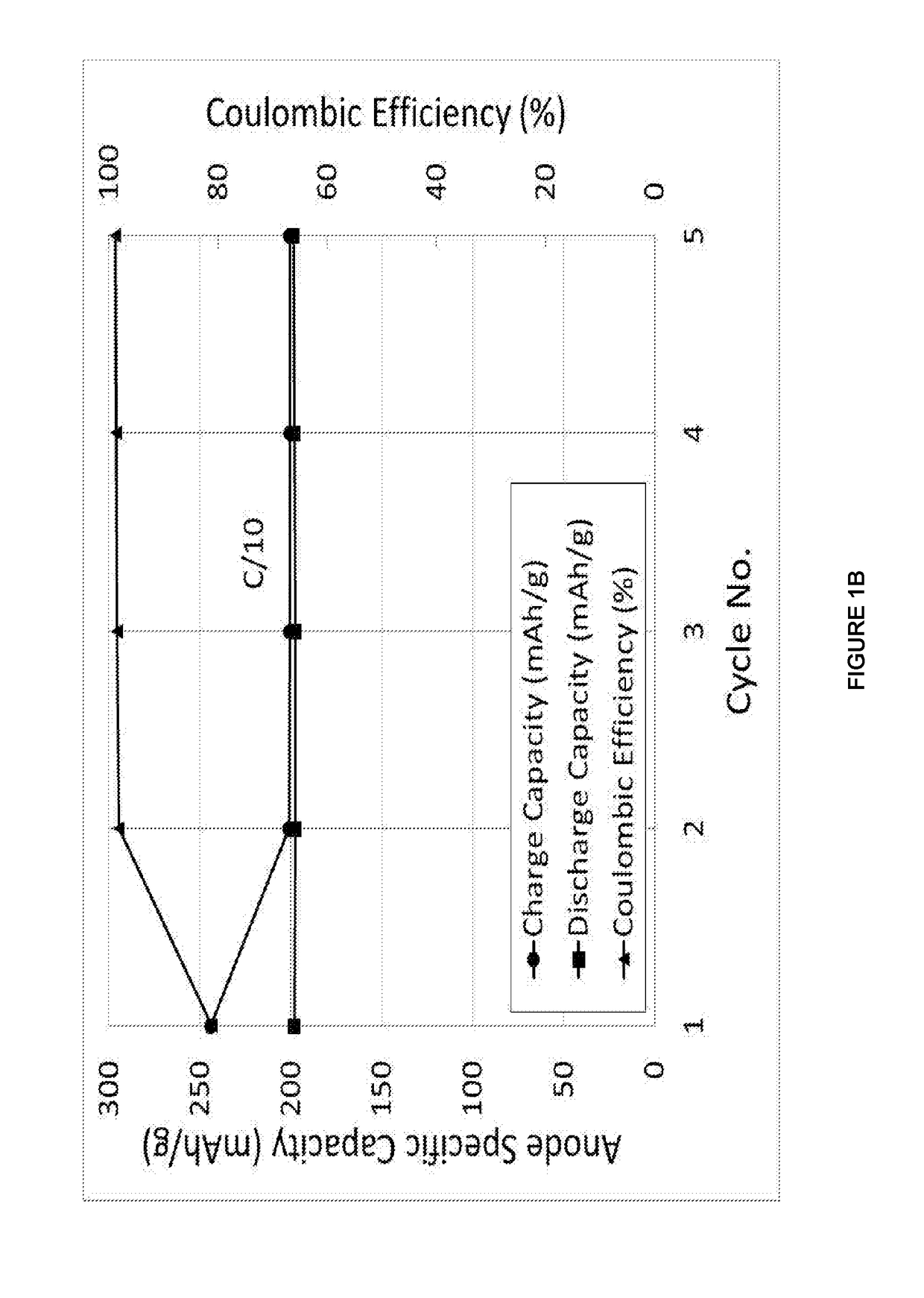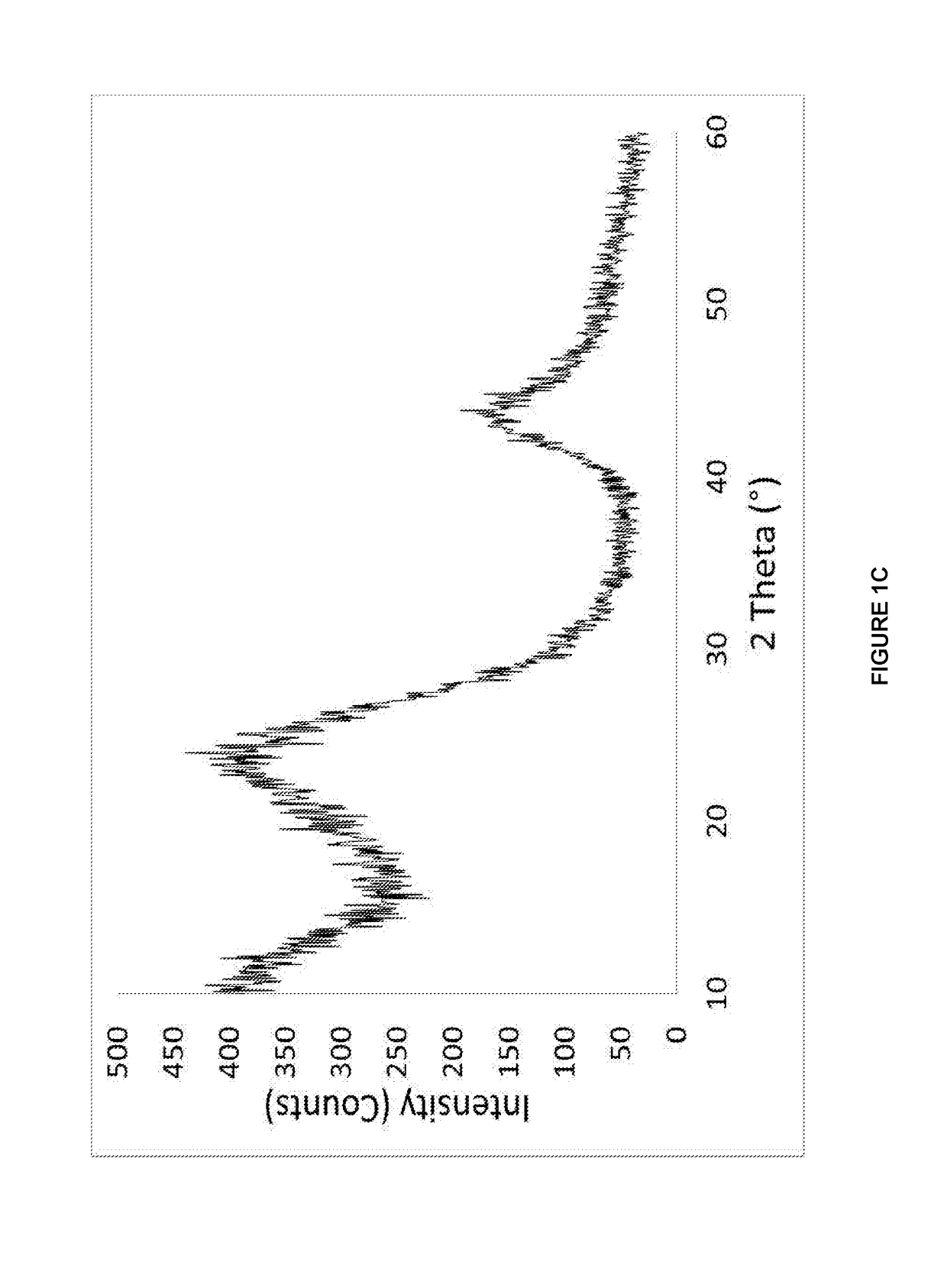X/hard carbon composite material and method of preparing the x/hard carbon composite material
a composite material and hard carbon technology, applied in the field of hard carbon compositecontaining materials, can solve the problems of not being able to meet the requirements of electrochemical activity, and being considered too expensive for large-scale applications, so as to improve the first specific discharge capacity and avoid the effect of lithium contamination
- Summary
- Abstract
- Description
- Claims
- Application Information
AI Technical Summary
Benefits of technology
Problems solved by technology
Method used
Image
Examples
example 2
[0149]Target composition: 10 wt % Sn, 90 wt % Hard Carbon
[0150]Starting materials: SnO2 and Faradion Hard Carbon (derived from pyrolysed corn starch).
[0151]The data shown in FIGS. 2A, 2B are derived from the constant current cycling data for a Hard Carbon composite (Sn 10 wt %, Hard Carbon 90 wt %) materials in a Na-ion cell where this Anode materials was coupled with the standard cathode material. The electrolyte used is a 0.5 M solution of NaPF6 in propylene carbonate (PC), ethylene carbonate (EC) and diethylcarbonate (DEC) 1:1:2 by weight. The constant current data were collected at an approximate a current rate of C / 10 between voltage limits of 1.00 and 4.30 V. To ensure that the Na-ion cell was fully charged, the cell was potentiostatically held at 4.30 V at the end of the constant current charging process until the current density dropped to 10% of the constant current value. The testing was carried out at 30° C. During the cell charging process, sodium ions are extracted from...
example 3
[0155]Target composition: 30 wt % Sn, 70 wt % Hard Carbon
[0156]Starting materials: SnO2, Faradion Hard Carbon (derived from pyrolysed corn starch.
[0157]The data shown in FIGS. 3A, 3B are derived from the constant current cycling data for a Hard Carbon composite (Sn 30 wt %, Hard Carbon 70 wt %) materials in a Na-ion cell where this Anode materials was coupled with the standard cathode material. The electrolyte used is a 0.5 M solution of NaPF6 in propylene carbonate (PC), ethylene carbonate (EC) and diethylcarbonate (DEC) 1:1:2 by weight. The constant current data were collected at an approximate a current rate of C / 10 between voltage limits of 1.00 and 4.30 V. To ensure that the Na-ion cell was fully charged, the cell was potentiostatically held at 4.30 V at the end of the constant current charging process until the current density dropped to 10% of the constant current value. The testing was carried out at 30° C. During the cell charging process, sodium ions are extracted from the...
example 4
[0161]Target composition: 10 wt % Sb, 90 wt % Hard Carbon
[0162]Starting materials: Sb2O3, Faradion Hard Carbon (derived from pyrolysed corn starch), C65™ carbon as the reductant (secondary carbon material).
[0163]The data shown in FIGS. 4A and 4B are derived from the constant current cycling data for a Hard Carbon composite (Sb 10 wt %, Hard Carbon 90 wt %) materials in a Na-ion cell where this Anode material was coupled with the standard cathode. The electrolyte used is a 0.5 M solution of NaPF6 in propylene carbonate (PC), ethylene carbonate (EC) and diethylcarbonate (DEC) 1:1:2 by weight. The constant current data were collected at an approximate a current rate of C / 10 between voltage limits of 1.00 and 4.30 V. To ensure that the Na-ion cell was fully charged, the cell was potentiostatically held at 4.30 V at the end of the constant current charging process until the current density dropped to 10% of the constant current value. The testing was carried out at 30° C. During the cell...
PUM
| Property | Measurement | Unit |
|---|---|---|
| particle size | aaaaa | aaaaa |
| particle size | aaaaa | aaaaa |
| particle size | aaaaa | aaaaa |
Abstract
Description
Claims
Application Information
 Login to View More
Login to View More - R&D
- Intellectual Property
- Life Sciences
- Materials
- Tech Scout
- Unparalleled Data Quality
- Higher Quality Content
- 60% Fewer Hallucinations
Browse by: Latest US Patents, China's latest patents, Technical Efficacy Thesaurus, Application Domain, Technology Topic, Popular Technical Reports.
© 2025 PatSnap. All rights reserved.Legal|Privacy policy|Modern Slavery Act Transparency Statement|Sitemap|About US| Contact US: help@patsnap.com



